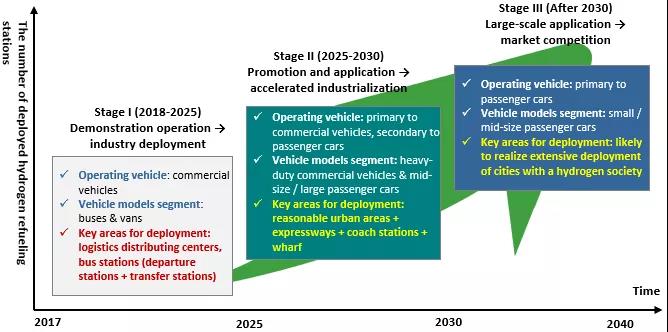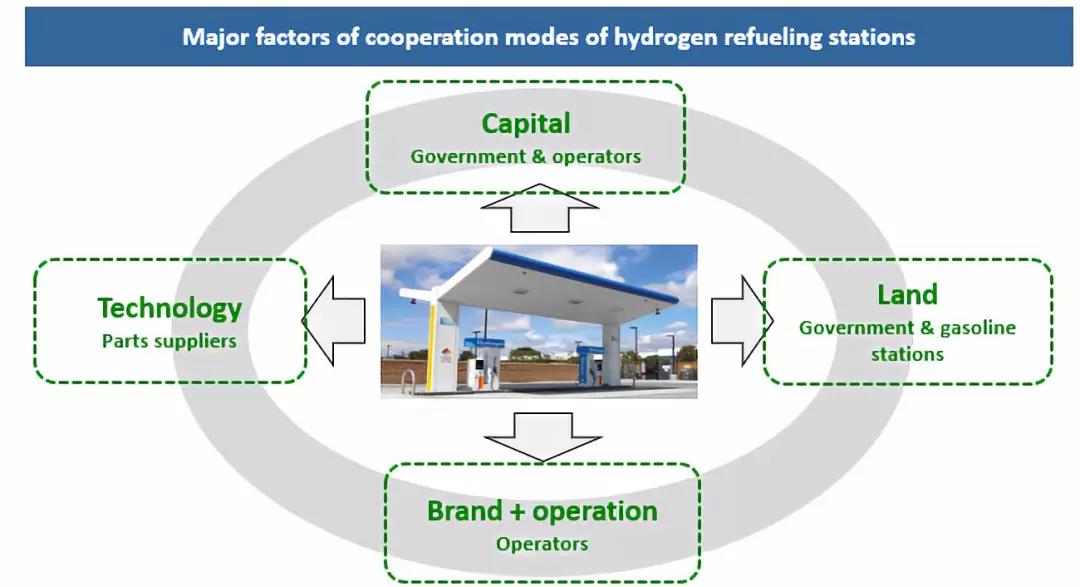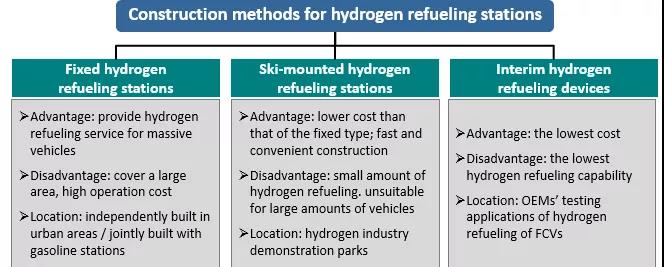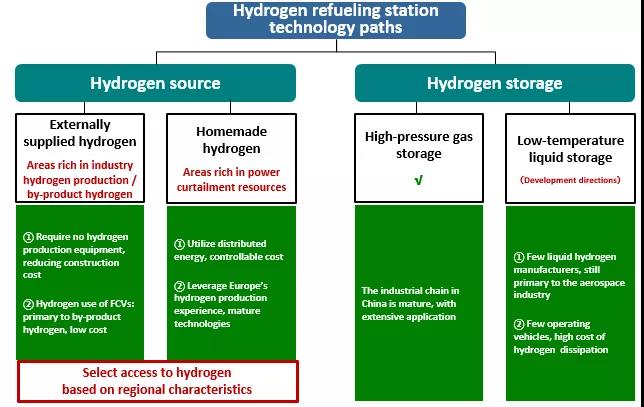上接《中國氫能汽車產(chǎn)業(yè)發(fā)展戰(zhàn)略研究報告01》
Key to Operation of Hydrogen Refueling Stations: Regional Deployment
Selection of functional areas for the construction and operation of hydrogen refueling stations at key locations is not only directly related to the operational requirement but also critical. According to the characteristics of the regional FCV applications, it is advised to select different areas for deployment at varied stages of development.
At the early stage, it is proposed to focus on logistics distribution centers and bus stations. At the medium stage, we will focus on high-speed areas, long-distance bus stations, and terminal layouts. At the later stage, cities with a hydrogen society may be widely deployed.

Operation of hydrogen refueling stations directly embodies the implementation of business and realization of business goals. Cooperation is essential: make full use of resources to address such issues facing hydrogen refueling stations as land, capital, technology, operation, regulation, subsidy and so on.

Construction of Hydrogen Refueling Stations in China: Initially Skid-Mounted Type, Supported by Permanent Sites
The types of hydrogen refueling stations: 1. Fixed hydrogen refueling stations; 2. Skid-mounted hydrogen refueling stations; 3. Interim hydrogen refueling devices. Hydrogen refueling station technology paths should combine with different application scenarios, ultimately resulting in a permanent hydrogen infrastructure.

Construction of hydrogen refueling stations in China: initially skid-mounted hydrogen refueling stations, supported by externally supplied hydrogen (high-pressure gas storage). It is advised to make appropriate deployment of fixed hydrogen refueling stations in the areas with advanced technologies for hydrogen production from renewable resources, for example: Zhangjiakou rich in windpower resource.

High-pressure gas storage of hydrogen is currently the major way for commercial application. Liquid hydrogen refueling stations can facilitate fast promotion of hydrogen infrastructure, and in future, liquid hydrogen can become the best cost-effective technology path for hydrogen storage.
Summary of China’s FCV Industry Development Strategies
1. Promoted by government policies and industry development: FCVs are expected to embrace a turning point for development by 2025, and start to enter the stage of commercialization around 2030
2. China’s FCVs should start from commercial vehicles, and will finally enter the passenger car segment
3. China’s goal of a developing hydrogen society: start from certain geographical areas
4. There is development required for China’s hydrogen standards systems. Enterprises should proactively participate in the development of the standards system and focus on hydrogen storage, delivery, safety and test standards
5. Hydrogen storage methods of hydrogen refueling stations: high-pressure gas storage → cryogenic liquid storage
6. It is advised to select different models for construction of hydrogen refueling stations based on the characteristics of the area for hydrogen production, storage and delivery. Initially skid-mounted hydrogen refueling stations and supported by fixed hydrogen refueling stations
7. Give priorities to the selection of locations for construction of hydrogen refueling stations: short-term focus → places for centralized hydrogen refueling of operators (logistics transfer centers + bus routes); mid-term focus → the deployment of operation routes (expressways, coach stations); long-term focus → realize widespread distribution of cities with a hydrogen society
本文轉載自《清華大學汽車產(chǎn)業(yè)與技術戰(zhàn)略研究院》
